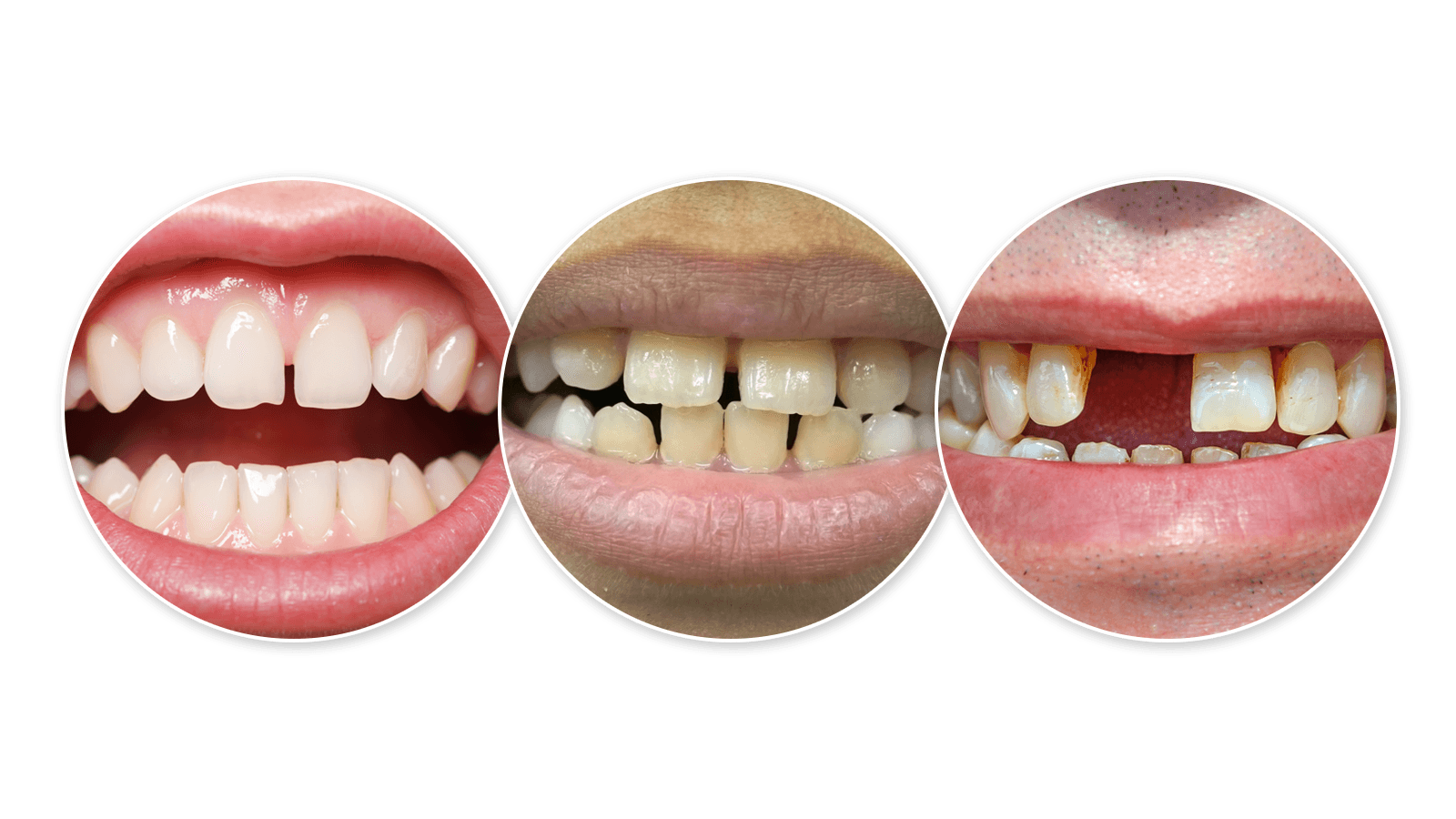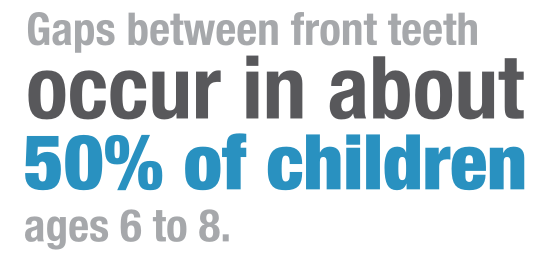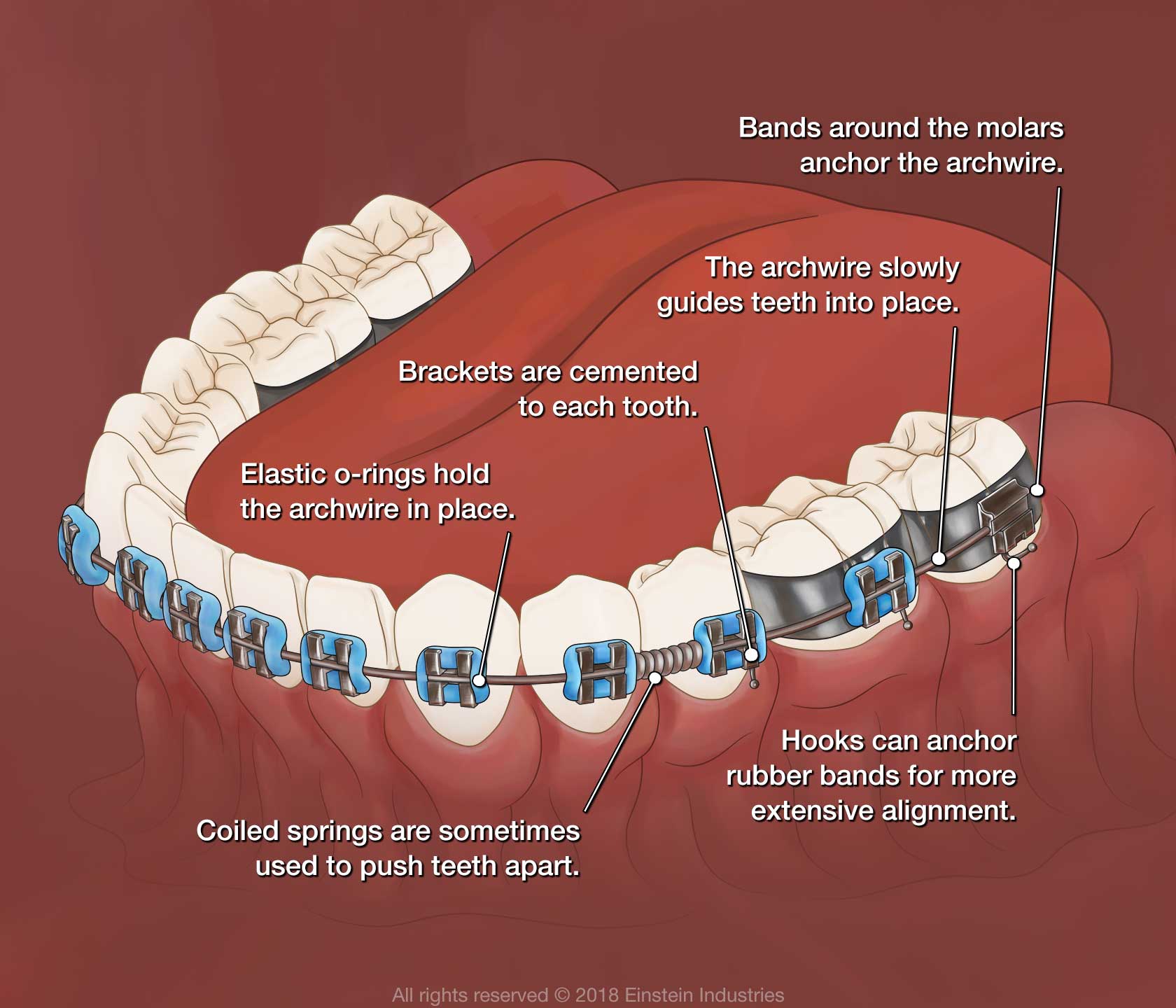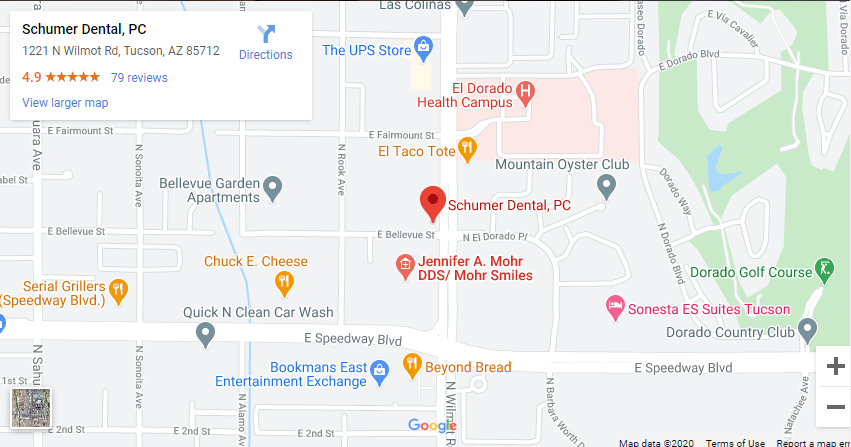While some gaps in your smile are a harmless cosmetic quirk, larger spaces can cause issues such as inefficient chewing.
If you are self-conscious about gapped teeth or need treatment to improve your oral health, your dentist can recommend a solution.
Do I need to worry about gaps?
Gaps Are Common for Children and Usually Harmless, but Sometimes Require Treatment
- Gaps between Baby Teeth
Known as diastema, gaps between teeth are especially common in kids. As children grow up, these spaces tend to close naturally when the adult teeth erupt.
- Permanent Diastema
If gaps remain after all the adult teeth erupt, they become permanent and will require professional diastema treatment.
- Gaps from Missing Teeth
Another common type of gap is caused when teeth fall out or require extraction. These types of gaps require prompt treatment to prevent serious side effects, such as shifting teeth.
Let’s take a look at some different types of diastema…

Different Types of Gaps Require Different Treatments
A gap left by an extracted tooth will involve a different treatment process – such as a dental bridge – than gaps caused by natural jaw development or childhood habits.
Are certain people more likely to develop permanent gaps?
Genetics and Childhood Habits Can Increase the Chance of Diastema
Many of the factors which cause gaps and other types of misalignment are genetic, including the size of your teeth and jaw. Often, gapped teeth run in families.
Certain bad habits which are common in childhood can also lead to the development of gaps, including thumbsucking.
What causes gapped teeth?
There Are Many Reasons You May Develop Gaps in Your Smile
- Large Frenulum
A frenulum or frenum refers to the band of tissue under the top lip, underneath the tongue, and inside the cheeks. If the tissue is longer than normal, it can cause gaps between the front teeth, either in the top or bottom jaw.
- Extra Teeth or Small Teeth
Smaller than average teeth or extra teeth that block others from coming in can leave gaps in your smile.
- Large Jaws
In some cases, the jaw is relatively large compared to the size of the teeth.
- Missing Teeth
You may have been born without certain teeth, which leaves a space behind in the jaw.
Are gaps between teeth normal?
Diastema Are Very Common in Young Children

However, this percentage decreases dramatically with age. Most childhood gaps will close on their own as permanent teeth erupt.
*According to a study by the American Academy of Pediatric Dentistry.
What should I do if I have gaps in my smile?
Your Doctor Can Tell You If Your Gaps Need Treatment or Not
For many patients, gaps are simply a cosmetic concern but some diastema can affect your oral health. Leaving large gaps untreated can cause other teeth to shift or increase your risk of gum disease. It is important to ask your doctor about gaps in your smile.
During your appointment, the doctor will examine your smile to assess the health of your teeth and gums. They may also take an x-ray or another type of scan to examine the tooth roots and see if any teeth are trapped below the gums, causing gaps. Be ready to discuss your medical and dental history so your doctor can determine the cause of your diastema.
Can I prevent gaps from forming?
While Most Diastema Are Hereditary, Early Evaluation May Help Prevent Issues
- Minimize Bad Habits in Childhood
If you are concerned about your child developing gaps, you can help their jaw develop properly by stopping thumb sucking and pacifier use at an appropriate age. Ask your doctor about the best time to wean children off of these habits.
- Consult an Orthodontist Early
The American Association of Orthodontists (AAO) recommends all children see an orthodontist by the age of seven. This early evaluation can help identify potential problems and implement strategies to ensure teeth erupt properly.
- Maintain Good Oral Health
Since issues such as periodontal disease can cause gaps to form between teeth, proper brushing and flossing can help prevent gaps from forming. You should also attend regular cleanings and exams to ensure your gums remain healthy.
Do I really need to go to a dentist if I have gapped teeth?
Preventing Gaps Requires Early Intervention
“Not all diastemas can be treated the same… Timing is often important to achieve satisfactory results.”
Wen-Jeng Huang, DDS and Curtis J. Creath, DMD, MS
Braces and other orthodontic treatments, such as Invisalign®, are commonly used to fix diastema. Orthodontics can adjust teeth to close gaps and create a healthier, more comfortable bite.
Orthodontic Treatment Is a Common Way to Correct Gaps
Braces and other orthodontic treatments, such as Invisalign®, are commonly used to fix diastema. Orthodontics can adjust teeth to close gaps and create a healthier, more comfortable bite.

A Range of Treatments Exist to Address Gaps

Porcelain Veneers
Veneers are a good option for the front of your smile and can adjust the size of teeth.

Dental Bonding
Your doctor can also hide gaps using a malleable composite resin material.

Periodontal Treatment
Gaps caused by periodontal disease require treatment to restore gum health.

Dental Restorations
Gaps caused by lost or naturally missing teeth can be filled using a restoration.

Frenectomy
Frenectomy, a simple surgery, can reduce the size of gaps caused by a large frenum.
I’m ready to fix the gaps in my smile. What should I do?
Contact a Doctor Today
If you feel self-conscious about gapped or missing teeth, you have many options to improve the health and appearance of your smile. Find out more about your next steps by contacting a doctor today.
































